Commercial, Distributed Energy Resources, Energy Efficiency, GHG Emissions, Industrial, Distributed Generation, Sourcing Renewables - April 27, 2022
SED's 2022 Innovation Summit Wrap-Up
Smart Energy Decisions’ 2022 Innovation Summit, held in March at The Houstonian Hotel, Club and Spa in Houston, Texas,, brought together a community of energy and sustainability buyers and suppliers focused on creating energy management strategies to hit emission reduction targets.
Noting SED’s motto, “Your success is our business,” John Failla, Founder and CEO explained, “The goals for our events are to help you accelerate the adoption of best practices in energy efficiency and renewable energy sourcing. And that, obviously, leads to you hitting your carbon emission reduction objectives. It’s got to be a balance of both reducing demand and then greening your supply.”
The summit provided an intimate environment offering educational general sessions, peer-to-peer networking, and one-to-one meetings between buyers and the suppliers who can help them succeed. The event opened with a buyer-only pre-conference workshop on “Developing your Vehicle Fleet Electrification Strategy” from Edison Energy. The closing night featured SED’s first WISE (Women in Smart Energy) Awards Reception & Dinner.
Following are brief highlights from the Innovation Summit general sessions:
Opening Keynote: “Mohawk’s Decarbonization Journey”
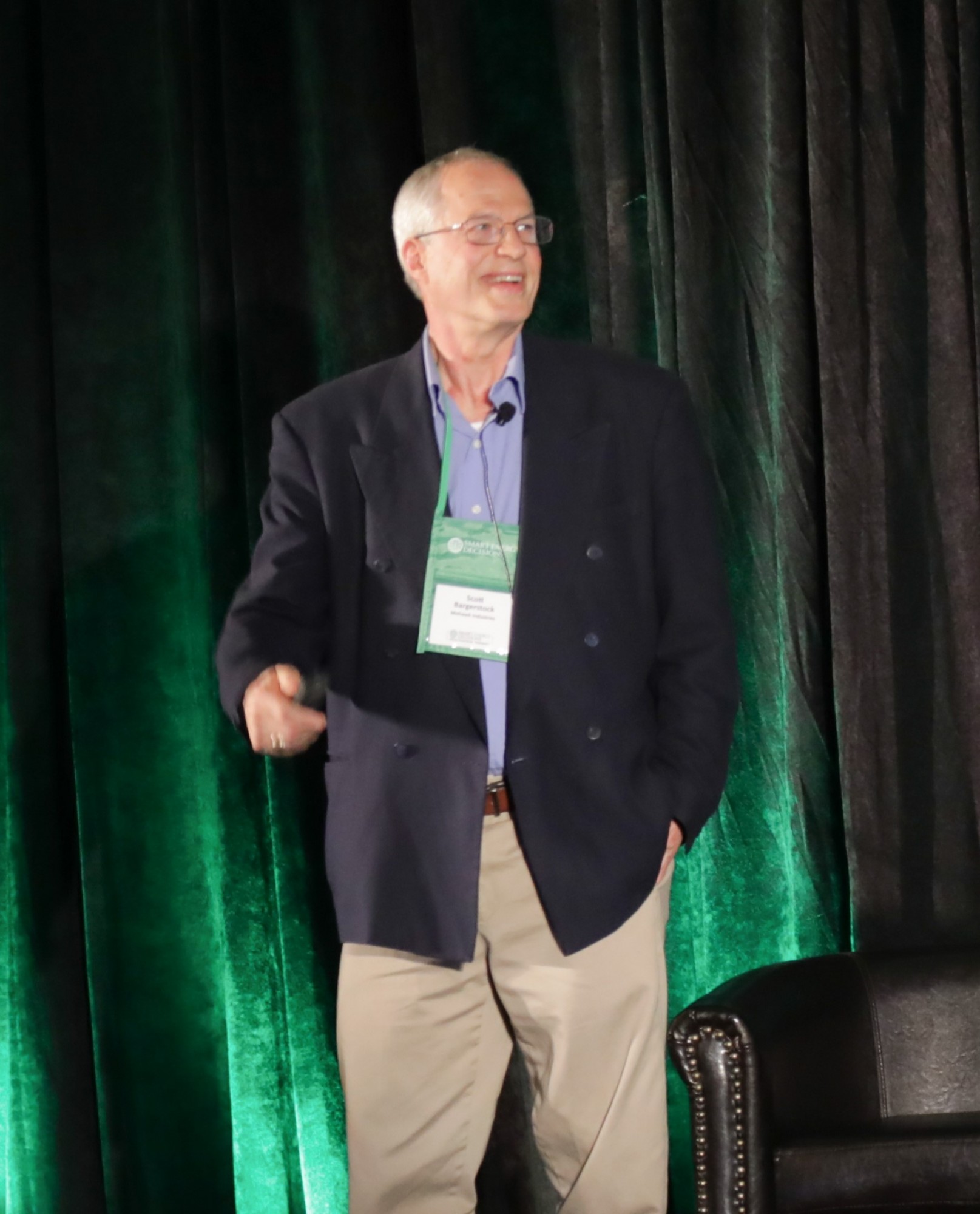
In his opening keynote, Scott Bargerstock, Director, Manufacturing Productivity and Global Energy – Demand at Mohawk Industries addressed the idea of innovation. Using the definition as the introduction of something new, he said, “I think everybody in this room fits the bill of [this definition]. We’re all trying to find something new that makes us smarter, faster, better, quicker, more profitable. A few years ago you would’ve never heard the term PPA or VPPA. All the distributed generation assets that are available now weren’t available just a few years ago. As an industry, as companies, as suppliers and customers, we are all innovating to find a better way to get there. Think of yourself as an innovator, think of your company as an innovator, because you’re doing something different to create different results."
Presenting Sponsor Discussion: “The State of Decarbonization”
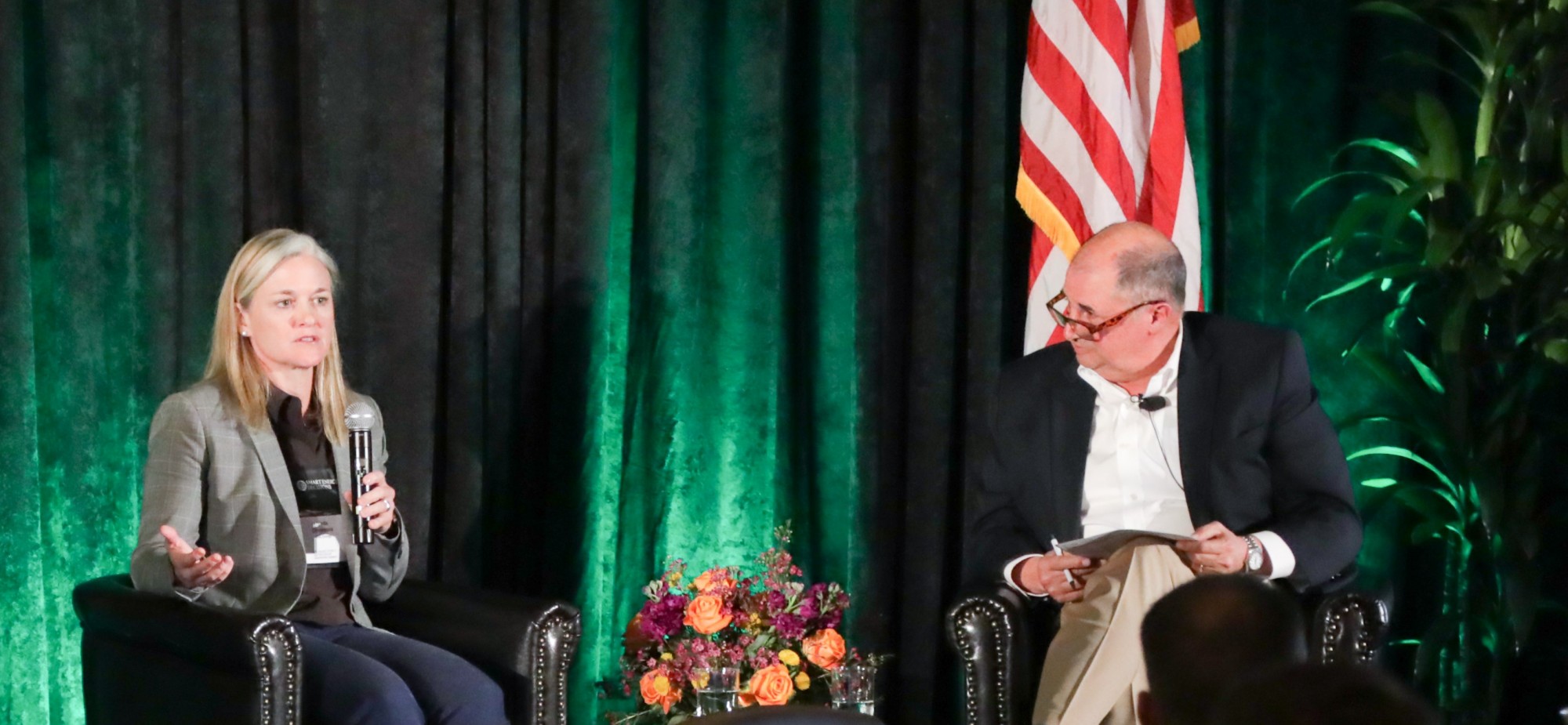 In a discussion with SED’s John Failla (right), Lynda Clemmons (left), Vice President, Sustainable Solutions at NRG explained the rapid ramp-up of emission reduction commitments. “There are a lot of factors at work, not the least of which is that the more conversations that we have here, the more people become aware of what the opportunities are. That is often followed by more pressure, both internally and externally, to set goals. We are waiting for the SEC to issue green guidelines, telling public companies what they need to disclose. Optimistically, it could work as a guide to help companies decide what’s important and what’s material. It could also create more confusion on exactly how to get it done. At NRG, we spend a lot of time with our customers helping them to figure out how to set goals and decide the most important goals for you, your company, and your industry."
In a discussion with SED’s John Failla (right), Lynda Clemmons (left), Vice President, Sustainable Solutions at NRG explained the rapid ramp-up of emission reduction commitments. “There are a lot of factors at work, not the least of which is that the more conversations that we have here, the more people become aware of what the opportunities are. That is often followed by more pressure, both internally and externally, to set goals. We are waiting for the SEC to issue green guidelines, telling public companies what they need to disclose. Optimistically, it could work as a guide to help companies decide what’s important and what’s material. It could also create more confusion on exactly how to get it done. At NRG, we spend a lot of time with our customers helping them to figure out how to set goals and decide the most important goals for you, your company, and your industry."
“The Premier of SED’s First Sustainability Report”
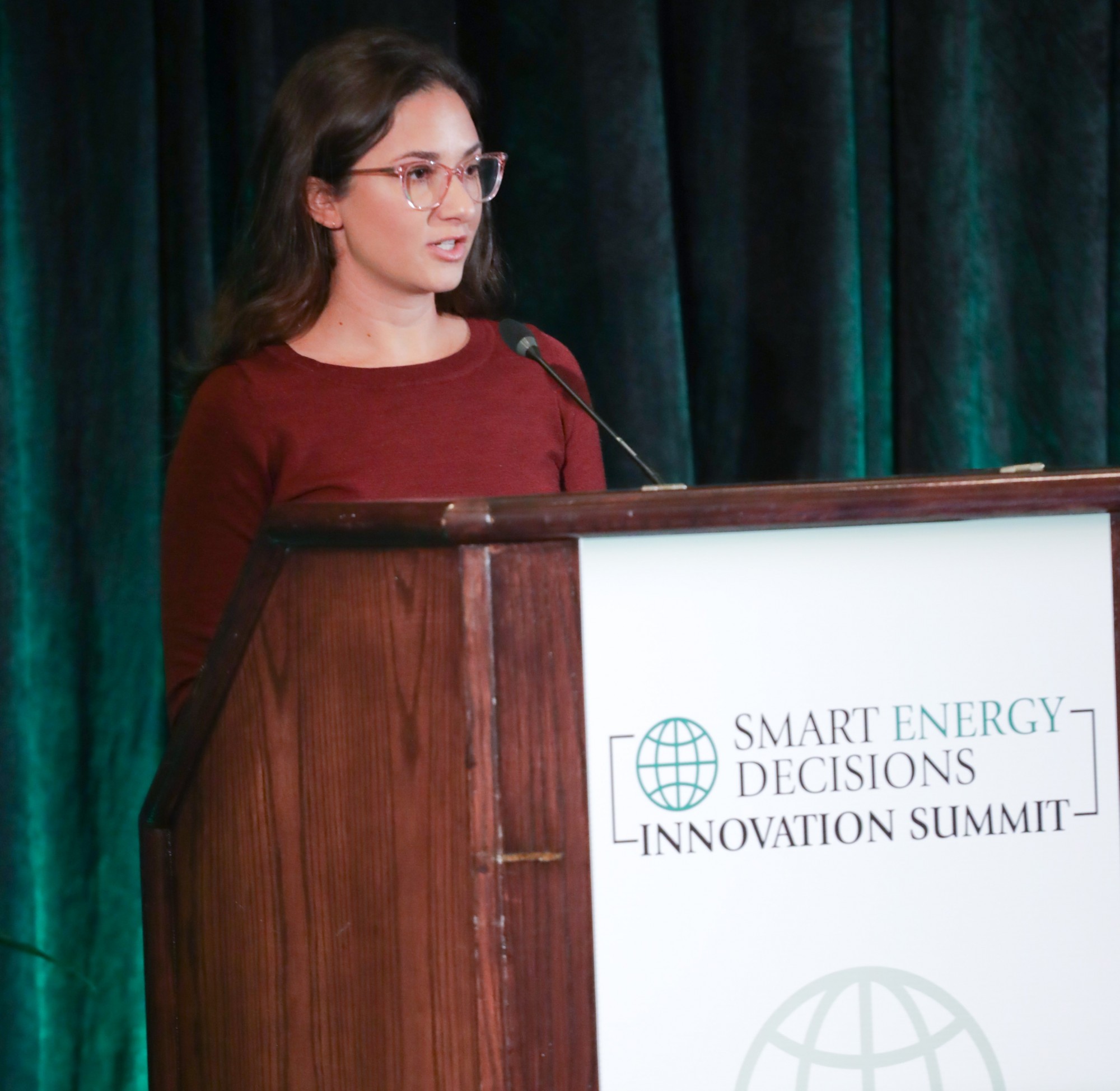 Presenting the reasons behind SED’s Sustainability Report – the first from an energy-focused B2B company – Alexandra Failla, Director of ESG and Administration explained, “We aimed to outline our activities thus far and demonstrate that we are committed to sustainable development. We want to establish an emissions inventory that we can use to plan future reductions. We want to find opportunities for efficiencies, innovation, and risk management. And, lastly, we plan to monitor our progress over time using KPIs.” She added, “In the report, we highlight how helping others navigate the energy transition is central to the mission and values of SED. We focus on the elements of your business that we believe have the most significant opportunities for positive impact.”
Presenting the reasons behind SED’s Sustainability Report – the first from an energy-focused B2B company – Alexandra Failla, Director of ESG and Administration explained, “We aimed to outline our activities thus far and demonstrate that we are committed to sustainable development. We want to establish an emissions inventory that we can use to plan future reductions. We want to find opportunities for efficiencies, innovation, and risk management. And, lastly, we plan to monitor our progress over time using KPIs.” She added, “In the report, we highlight how helping others navigate the energy transition is central to the mission and values of SED. We focus on the elements of your business that we believe have the most significant opportunities for positive impact.”
Panel Discussion: “Decarbonizing Thermal Loads – The Next Frontier”
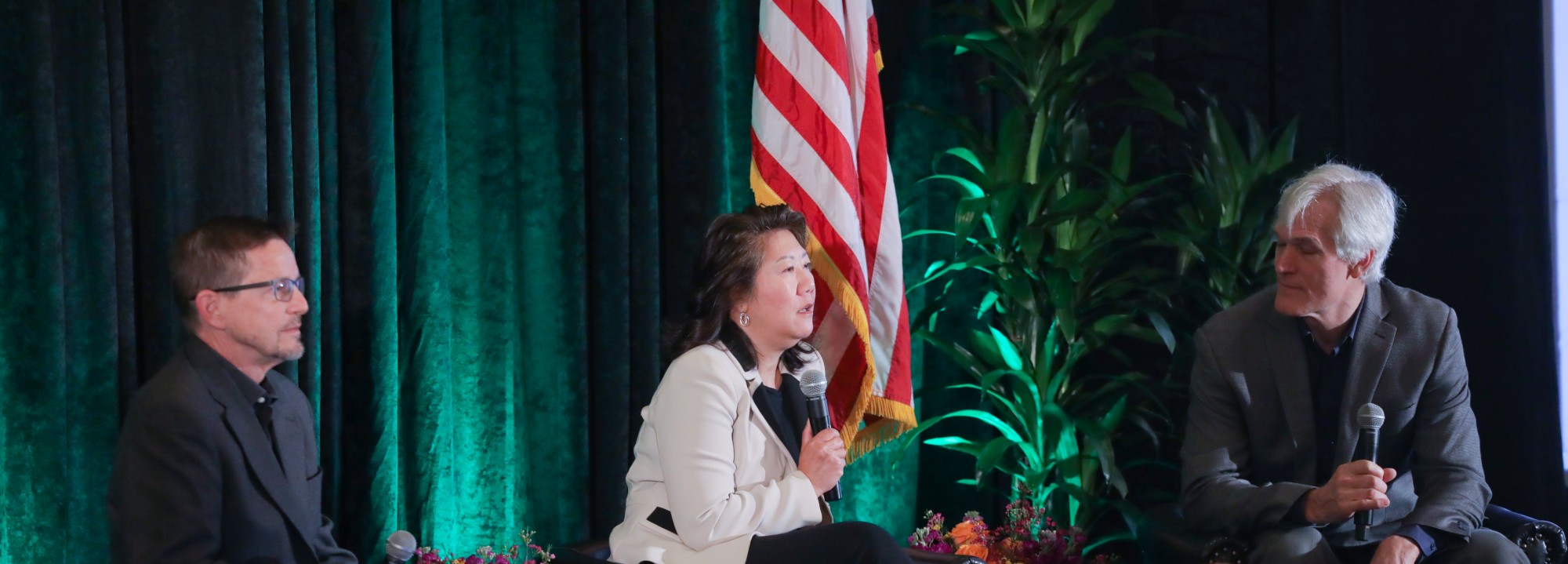 Setting the stage for this discussion, Peter Kelly-Detwiler (right), Director of Educational Programs and Author of “The Energy Switch” said, “Hard-to-abate emissions are the really tough ones to go after, and thermal is especially a challenge. It’s a quarter of our energy use and about half of our emissions.” While hydrogen and other interesting technologies are starting to emerge, he continued, “In this thermal application space, the challenge is going to be that applications won’t be one-size-fits-all because each of you with your different end uses may need different technologies.”
Setting the stage for this discussion, Peter Kelly-Detwiler (right), Director of Educational Programs and Author of “The Energy Switch” said, “Hard-to-abate emissions are the really tough ones to go after, and thermal is especially a challenge. It’s a quarter of our energy use and about half of our emissions.” While hydrogen and other interesting technologies are starting to emerge, he continued, “In this thermal application space, the challenge is going to be that applications won’t be one-size-fits-all because each of you with your different end uses may need different technologies.”
Susan Corry (middle), Director of Engineering and Energy at the University of Maryland explained that the operation and maintenance of a 27-MW combined heat and power plant “is what causes me to lose some sleep” as roughly 80% of current emissions come from that plant. To tackle this problem, she says, “We’ve built a matrix looking at various technologies and strategies. None of the technologies right now that are available are mature yet, not quite scalable, and frankly, I’m not at a point where I’m comfortable recommending a single technology as a replacement to reduce or eliminate our carbon reductions associated with that power plant.”
David Reid (right), Global Energy and Productivity Leader for Celanese explained the challenges of funding projects: Some companies have a separate capital fund for sustainability or they have an internal cost of carbon, mechanisms to help justify projects. At Celanese, our energy and sustainability projects compete for capital with every other project within the company so it’s always a challenge to get the funds. That’s why we’re looking for a different playbook for getting some of these projects justified within the company. We’re really trying to open our minds to different opportunities to finance some of these projects and help them move forward."
“Best Practices in Vehicle Fleet Electrification – Evolve Houston”
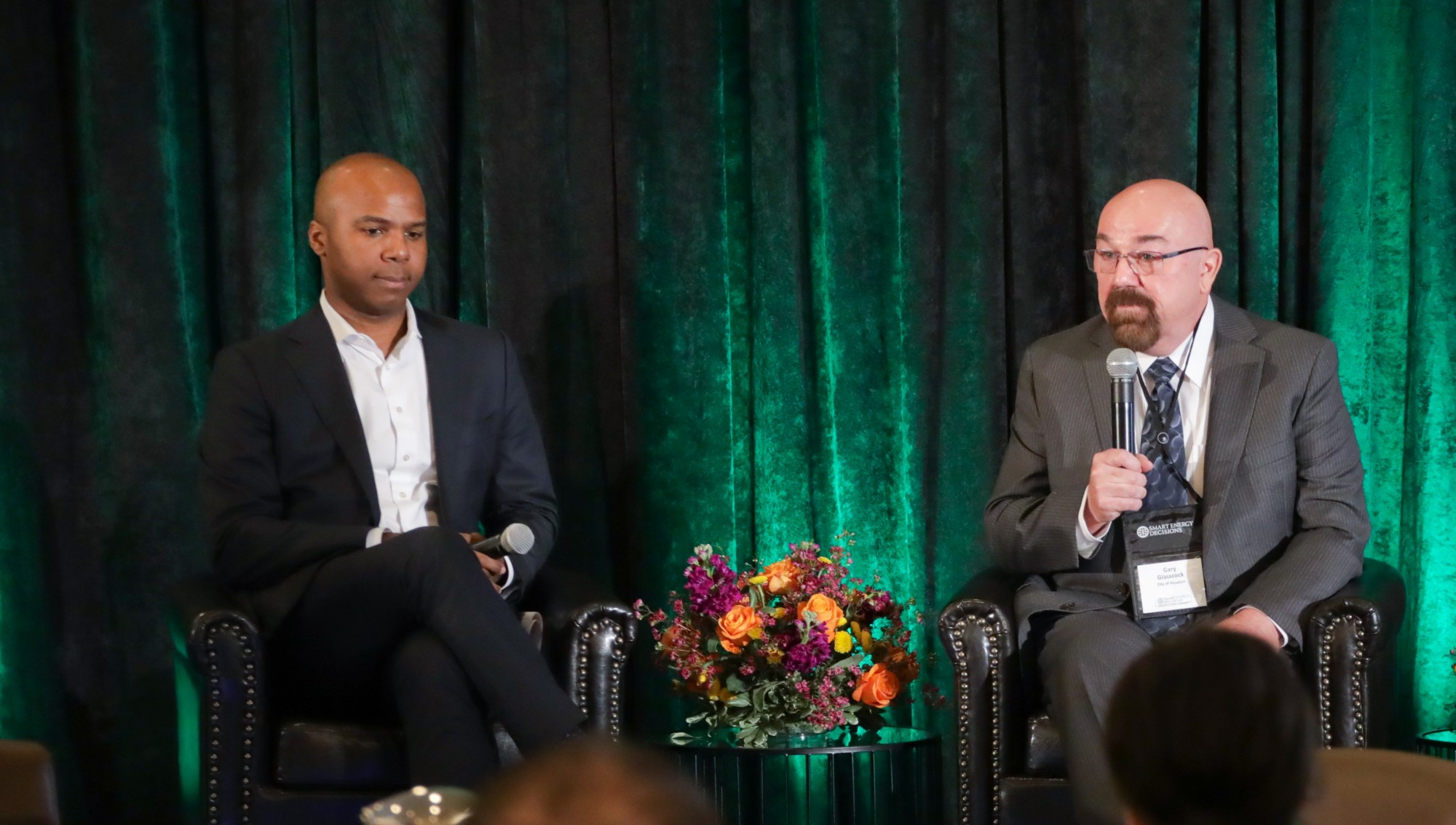 Discussing a unique public-private partnership between the City of Houston and EVolve Houston, Ryan Martin (left), Interim President and Managing Partner at EVolve Houston, explained why his group conducted and funded a fleet study program for the city. “There are a lot of complexities that go into the discussion and considerations for fleet electrification across departments. We thought a baseline starting place would be to study light-duty vehicles.” The study involved more than 5,300 vehicles over three years, as well as the availability of charging station infrastructure.
Discussing a unique public-private partnership between the City of Houston and EVolve Houston, Ryan Martin (left), Interim President and Managing Partner at EVolve Houston, explained why his group conducted and funded a fleet study program for the city. “There are a lot of complexities that go into the discussion and considerations for fleet electrification across departments. We thought a baseline starting place would be to study light-duty vehicles.” The study involved more than 5,300 vehicles over three years, as well as the availability of charging station infrastructure.
The study led to the city's purchase of 97 EVs. Gary Glasscock (right), Director of Houston’s Fleet Management Department, said, "We set up pilot programs in our bigger departments to collect data on the operation of these vehicles. We’ll use that data to make a plan going forward on how to most efficiently and effectively implement a much wider scale EV program. These pilot programs will go a long way in helping to ease the fears within the departments. They’ll be able to see first-hand how these vehicles can be operated in their specific applications. We feel confident that it’s going to help us get more motivation from within the departments behind our program."
“Driving Energy Innovation with Data Analytics at Clemson University”
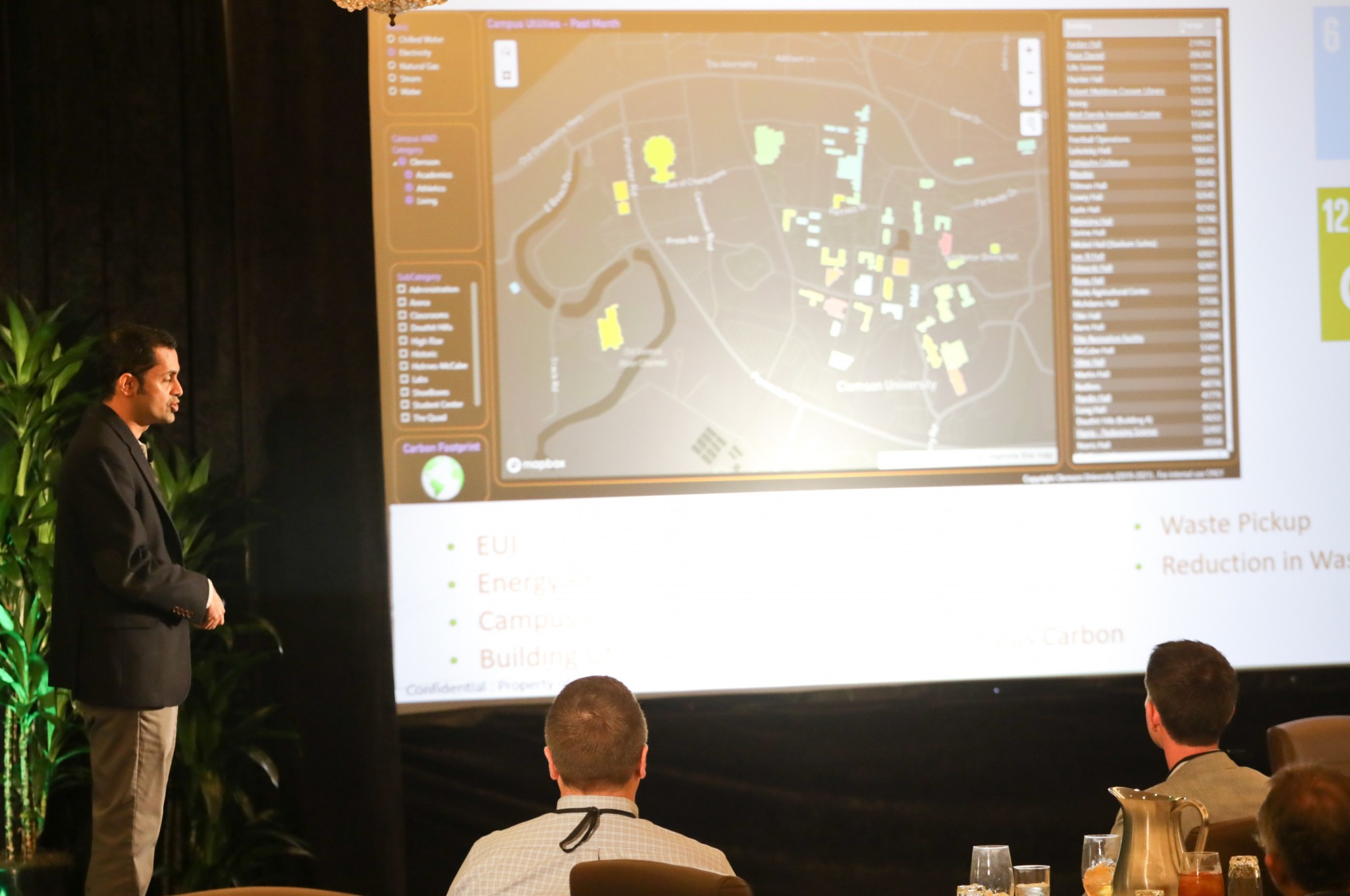 Explaining the purpose of the Clemson Energy and Visualization Analytics Center (CEVAC) at Clemson University, Snowil Lopes (pictured), Energy Engineer and CEVAC’s Director for Technology and Research said, “We have a hefty goal of 2030 carbon neutrality, so we want to see how we can ensure that goal. It’s a big challenge for us. We also have a 7,000-acre forest on both sides of our campus that we want to preserve and grow.” The Center has multiple data sets, dashboards, and automation processes, “so we can drive decisions. We can create data streams for our partner consultants and our students. We also laid a lot of research to learn how to drive automation using those data sets."
Explaining the purpose of the Clemson Energy and Visualization Analytics Center (CEVAC) at Clemson University, Snowil Lopes (pictured), Energy Engineer and CEVAC’s Director for Technology and Research said, “We have a hefty goal of 2030 carbon neutrality, so we want to see how we can ensure that goal. It’s a big challenge for us. We also have a 7,000-acre forest on both sides of our campus that we want to preserve and grow.” The Center has multiple data sets, dashboards, and automation processes, “so we can drive decisions. We can create data streams for our partner consultants and our students. We also laid a lot of research to learn how to drive automation using those data sets."
Tim Howard, Director, CEVAC Operations and Development, illustrated the enthusiasm of students involved in the program. "We have a sustainability minor at Clemson, so students come in to tour our building. They all know we’ve got a goal but they don’t think it’s going to be achievable because the Innovation Center is very high tech and looks like the largest energy consumer on campus. But by the time the tour is over, they’re volunteering to work on the team and I’m picking up resumes. We once had 100 applications in two days”
Closing Keynote: "Collaboration 2.0 – Accelerating Merck’s Low-Carbon Transition"
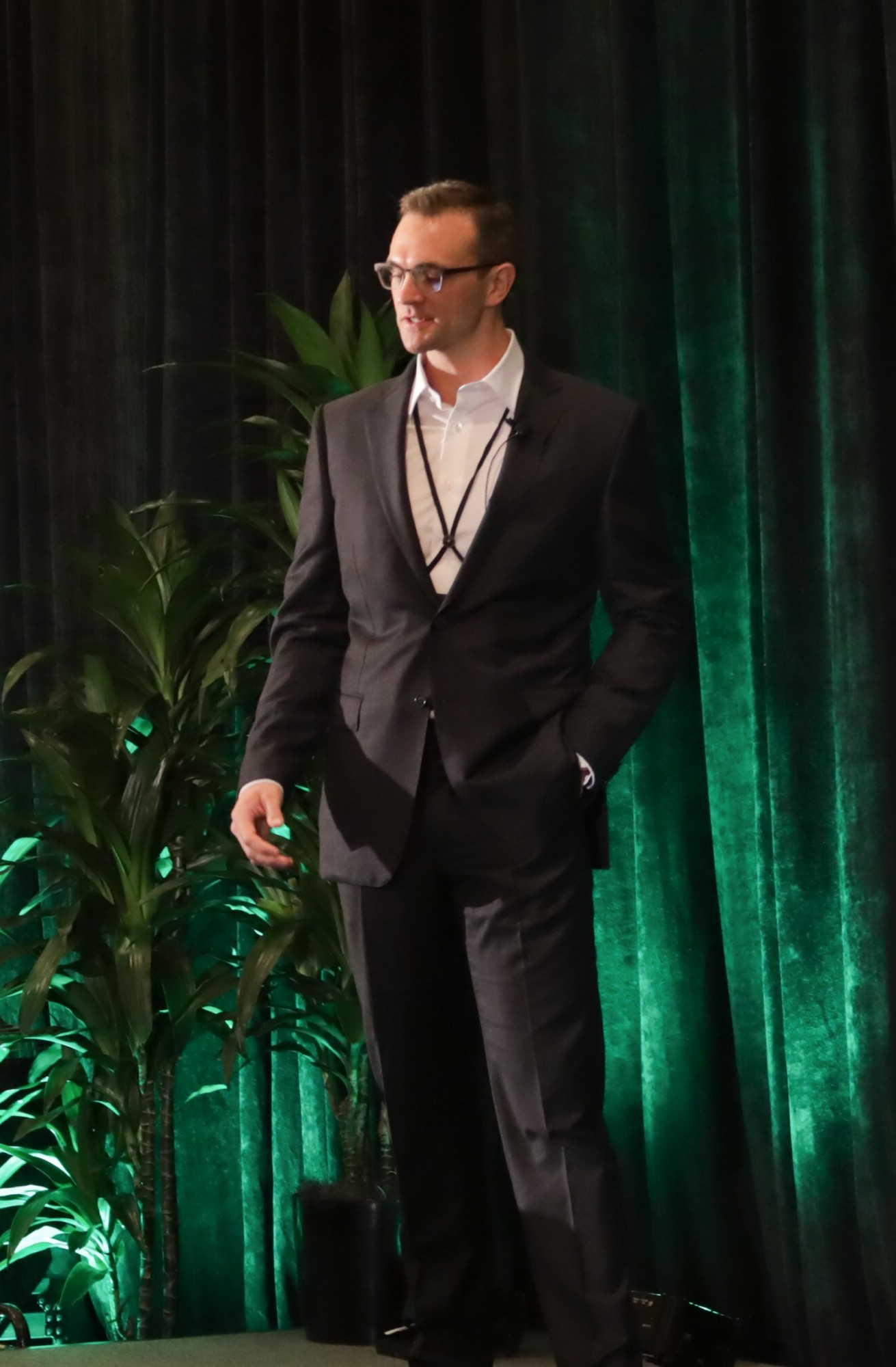 A powerhouse team from Merck appeared, both in person and virtually, to present a comprehensive view of how the company has expanded its ESG efforts and removed silos to collaborate across a variety of teams.
A powerhouse team from Merck appeared, both in person and virtually, to present a comprehensive view of how the company has expanded its ESG efforts and removed silos to collaborate across a variety of teams.
Michael Waslin, Associate Director, Environmental Sustainability Center of Excellence, said, “We have a saying at Merck, it’s not just what we do that matters, which is making life-saving medicines for humans and animals, but it’s also how we go about doing it that matters.” Since 2013, “we’ve had a three-prong approach to our strategy with efficient operations, designing for the environment and reducing risks in our value chain. But that’s also involved as we bring in new products. We’ve also changed to become more collaborative with our suppliers.”
Christopher Broome, Associate Director, Energy and Sustainability Center of Excellence discussed Merck’s Low-Carbon Transition Playbook. “Our sites are hit with all kinds of objectives and they don’t really know where to start. We took a pyramid strategy and we basically translated that into a playbook. The sites take a questionnaire that gives them a maturity score and prioritizes where they need to focus based on their deficiencies. We do this through energy awareness – that’s the key, to make all employees aware of what we’re doing.”
Diving under the hood of the procurement strategy being employed to achieve Merck’s 2025 goal [to be carbon neutral in Scope 1 and 2 emissions], Nathan Taylor (pictured), Global Energy Procurement Lead described the company’s portfolio approach: “We’re using all the tools available, including green tariffs and VPPAs in markets where they’re economically competitive. We do use onsite renewables, but overall, we’re only expecting onsite to drive about 7% of our overall goal. The way that we go about achieving this is much like many other corporates have, with the virtual power purchase agreement.
Michelle Rodrigues, Associate Director and ESG Finance Lead, discussed Merck’s inaugural $1 billion sustainability bond. “This was an exciting transaction for Merck and it helped us formalize our financial commitments to ESG when it was issued in December 2021. It’s a 7-year sustainability bond focused on social and environmental projects at Merck, though Merck intends to fully allocate this grant within 24 months.”
Closing the session, Douglas Yunaska, Director, Energy & Sustainability CoE, Facilities said, “We are trying to mitigate in the short-term transition in the long-term and minimize the amount of offsets that we have to use over time. We’ve got our focus on our efficient operations leveraging the low carbon transition playbook process to assess, plan, and execute projects and forecasts. We’re done justifying the business case for this. Now we’re into execution and using these tools and the networks that we built to drive progress proactively. Just as important is the culture building, the connecting of employees, their passions, and what makes them feel better and good about working for a company - having a purpose and a connection.”
“Deciphering the Promise of Hydrogen: What’s Hope, What’s Hype, and What Do I Need to Know?”
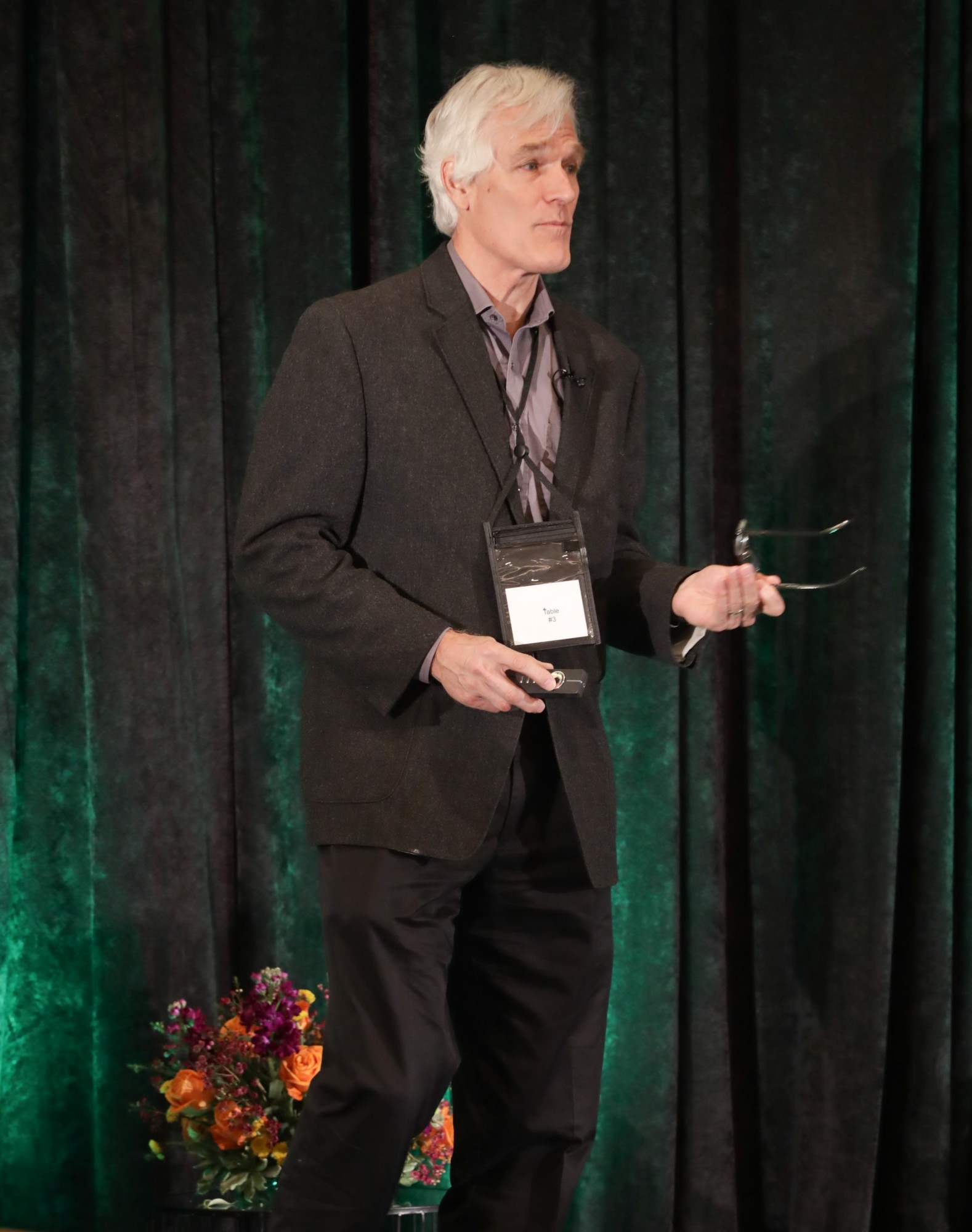 Peter Kelly-Detwiler, SED’s Director of Educational Programs, returned to the stage to explore hydrogen, giving a quick primer on the significance of colors. "Green hydrogen is from renewables, principally from wind and solar. Brown hydrogen is from steam methane reformation using coal, so emissions are horrible. Gray or black, which uses natural gas, has about half the emissions of coal. Yellow uses normal grid electricity. Pink, purple, or red, depending on who you talk to, is using electrolysis with nuclear power. And then there’s pyrolysis, the turquoise, where supercritical temperatures create hydrogen from that process. Going forward, the majority is going to be green and blue, which is carbon capture and storage.”
Peter Kelly-Detwiler, SED’s Director of Educational Programs, returned to the stage to explore hydrogen, giving a quick primer on the significance of colors. "Green hydrogen is from renewables, principally from wind and solar. Brown hydrogen is from steam methane reformation using coal, so emissions are horrible. Gray or black, which uses natural gas, has about half the emissions of coal. Yellow uses normal grid electricity. Pink, purple, or red, depending on who you talk to, is using electrolysis with nuclear power. And then there’s pyrolysis, the turquoise, where supercritical temperatures create hydrogen from that process. Going forward, the majority is going to be green and blue, which is carbon capture and storage.”
“Greentown Labs Start-up Showcase”
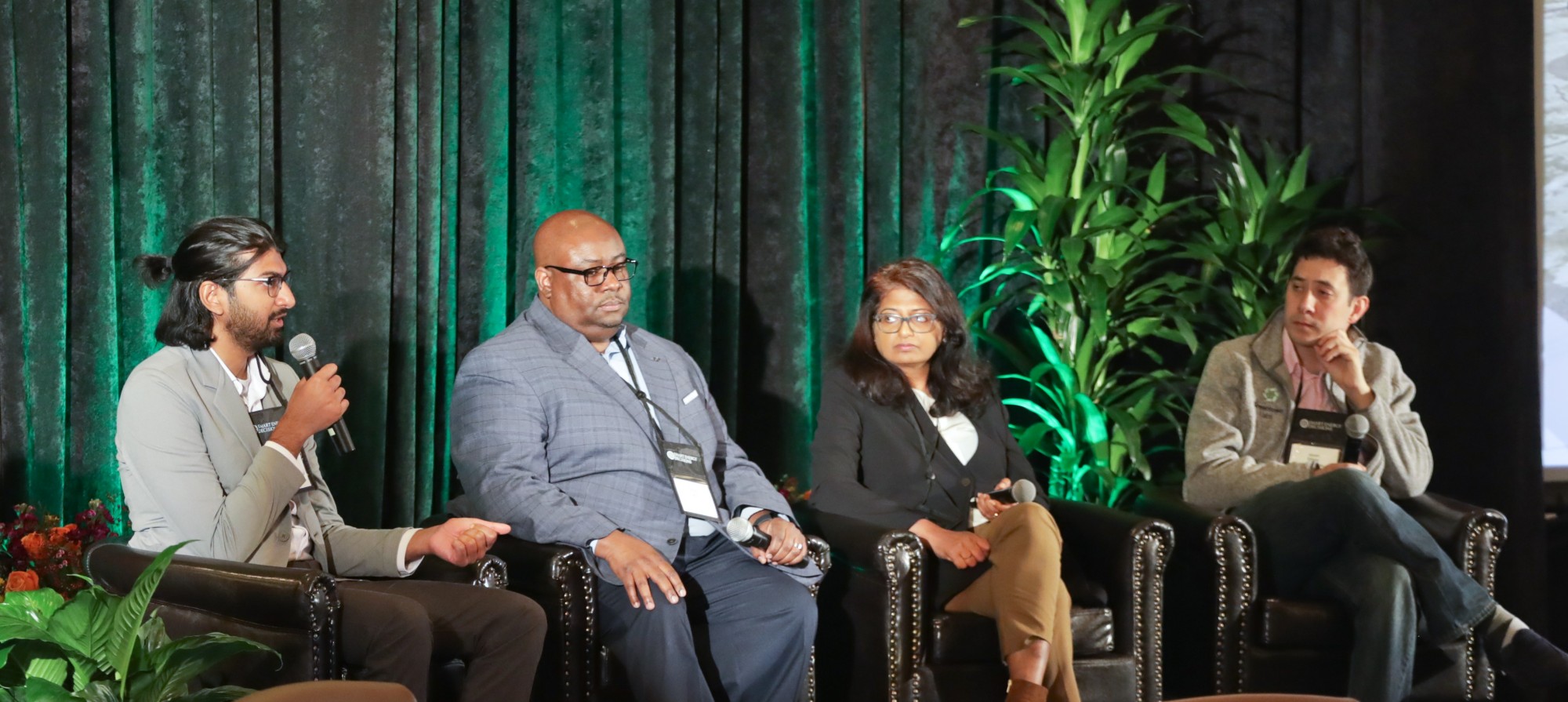
Jason Ethier (far right), Senior Director of Membership, describes the Greentown Labs incubator. “It’s really about collaboration, bringing people together to understand how new technologies or new business models fit into a complex ecosystem. We facilitate connections because that is how you bring technology into the market, by finding the right buyers, the right partners, the right support system that makes technology happen. With locations in Boston and Houston, Greentown currently works with 200 companies today and has worked with another 450 who have gone out into the world."
Mihir Desu (far left), Co-founder of Pressure Corp, asked, “Did you know about 30% of global emissions stem from heavy industrial customers, and a majority of the energy generated for industrial processes – 51% to be exact - is wasted? Our mission is to curb industrial emissions today by unlocking the value of this waste pressure.” The process involves the installation of a waste pressure power project in parallel to an existing pressure let-down station to create clean electricity, which can offset some of the combustion used to generate electricity at that site.
Sujatha Kumar (middle right) is Founder and CEO of Dsider, which has created a platform to help companies accelerate decarbonization. “The platform helps you scale and intuitively design different decarbonization pathways. There are three components: modeling, measuring, and managing your decarbonization platform all in one place. No matter where you are in your journey, Dsider can help you, from planning and aggregation to predicting and projecting your decarbonization across multiple years."
Ralph Owens (middle left), Co-founder and Vice President of Global ROC, a minority and veteran-owned business, said “We focus on cooling tower optimization, which allows for the complete elimination or significant reduction of chemicals, water and energy usage.” The company offers two products: one for commercial cooling towers and one for industrial settings.
“Panel Discussion: Women in Smart Energy (WISE)”
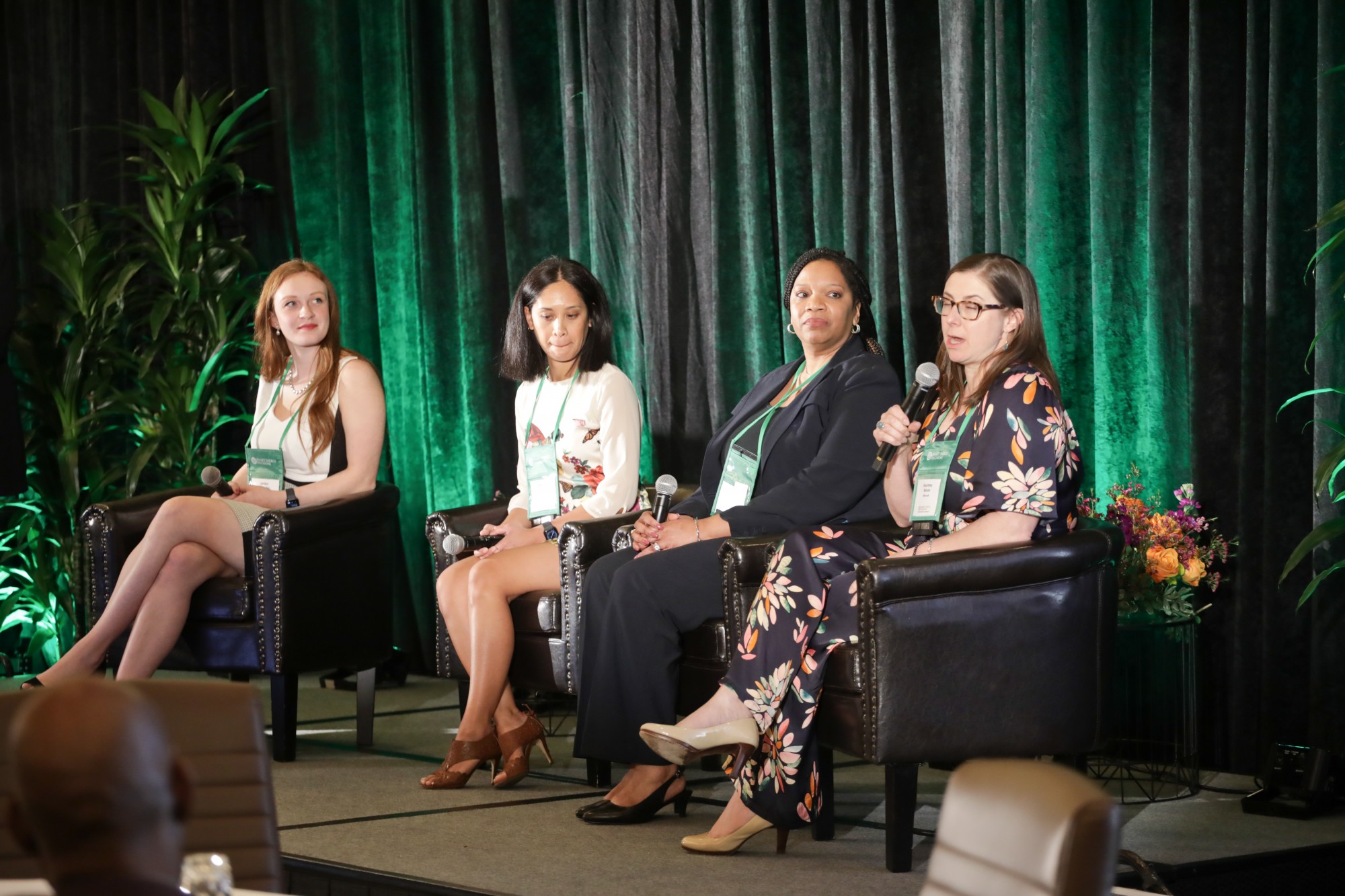
This panel presented four winners of SED’s WISE awards in an insightful discussion of the challenges and successes of women in the energy and sustainability field.
Capping a discussion on the importance of mentorship, Creshona Armwood (middle right), Chief of Energy and Sustainability for the General Services Administration, Region 4, noted that it doesn’t always come through a formal arrangement. “I encourage trusted advisors in your workspace so that when you come out of forums or leave meetings, you have someone that you can take constructive criticism from. Brace yourself and be ready to receive that type of feedback. It’s an important element of your ability to grow and improve. Hey, you were in a meeting with me. How did I do? How did I present myself? Did I provide relative topic areas of discussion? Were my questions appropriate? I encourage that informal type of feedback and relationship that you establish within your work environment.”
Kourtney Nelson (far right), Principal Program Manager, Renewable Energy, discussed how she handles her role as a mentor to a young woman, offering practical advice on navigating what it means to be a working professional. “It’s been fun for me to wonder how I would solve these issues when I was that young. Sometimes she’ll ask me questions and I’ll reach out to what I call my wolf pack, women who I’ve grown up within the industry. We’re at different places, we have different roles, but we’re all 15-20 years into our career, and so we call each other, text each other. I have relied on these women, particularly in the last two years when we’ve all been isolated and had to navigate new normals."
Monica Ferrer (middle left), Senior Director of Energy and Sustainability, Equity Lifestyle Properties noted that culture matters. "I’m very fortunate to work for an organization where 58% of the management roles are filled by women. My CEO is a woman. I am part of a culture where I have allies, where I know people are supportive and open to my ideas. They’ll challenge me, they’ll give me feedback. It opens up so many more opportunities. I recognize that not all cultures are like that but find an ally. Being able to feel safe about sharing feedback or your experiences or just fundamentally feeling supported at work goes a really long way."
Jordan Calverley (far left), U.S. Sustainability Manager with McDonald's, said, “I think most women in the room have experienced walking into a room, a meeting, or joining a Zoom call where you’re the only woman there and how it can feel difficult to have your voice heard in those situations. So, the call to action would be for everyone to be cognizant of that. When you enter a meeting, look around and see who’s there. If there is only one woman or one young person or one person of color, be aware of that dynamic and how they might be feeling in that situation and then be proactive about including them, creating space for them, making sure that they’re heard. Be an ally.”
Smart Energy Decisions continues its return to IN PERSON events with the Renewable Energy Forum/Summer Edition, set for June 6-8, 2022 at the Ponte Vedra Beach Inn & Club, Florida. Act now - registration closes on Friday, May 6. Buyer registration is now limited; for more information, click here. Suppliers may click here for information on sponsorship opportunities.
Share this valuable information with your colleagues using the buttons below:
« Back to NewsStay Up-To-Date












